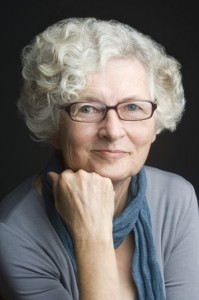 1.Who are the short fiction authors you admire (Australian or otherwise, alive or dead)?
1.Who are the short fiction authors you admire (Australian or otherwise, alive or dead)?
Tillie Olsen, Ernest Hemingway,Alice Munro, Pam Houston, Lorrie Moore, Jhumpa Lahiri, Tina Lupton, Katie Chase, Elizabeth Strout. From Australia, Ryan O’Neill and Sue Taylor.
2. What is the most memorable short story you have read? And why does it stand out for you?
My current favourite is Sue Taylor’s ‘A Picture is Built’ from her relatively unknown collection, Large Nudes with Small Parrots. Fellow writer, Linda Godfrey gave it to me a year and a half ago and I still think, I want to write like that. When the narrator shows the absurdity of the defences she is constructing, it is as though she is without defences. What remains is a woman listening to a radio broadcast in a self-obsessed paranoid and very funny way. Well, I can identify with that. Lots of humour and an unusual depth of understanding of motivation.
2.What do you like about the short story form?
The invitation to experiment and play. I can write a story from one POV or tense or voice and change it into another on the same day. Radically changing a short story is a 50-yard dash rather than an international marathon.
3. How would you describe your own writing?
I have changed my approach to writing poetry in the last few years and I want to make similar changes in my prose, to loosen up, take more risks.
4. Which of your stories are you most fond of right at this moment and why?
‘Cherry Pie’ has always been a favourite. How many stories write themselves on the kitchen table over a cup of coffee? Muse, wherever you are, please send me another one of them! As well, I like ‘The Executioner’, in which the coming of age theme is played out on political as well as domestic levels.
4. Where do the ideas for your stories come from? (Take us through an example)
Usually stories start from a few words I overhear, probably incorrectly, or a tiny incident among strangers I think I glimpse and then fantasise about. The story ‘Skim Flat White’ is full of tiny real and imagined interactions on the 470 bus line that runs from Lilyfield to Circular Quay in Sydney. I can’t remember which incident hooked me first.
From the bus I used to stare at a sign on a wooden door in Booth Street which still intrigues me. On the sign is a Greek word for a hierarchy of taxi drivers. I looked it up. I interviewed the sister of the man in the vegetable store. I borrowed a camera and stood in the street to take photographs. I scanned one into the story. I wrote thousands of words imagining what happened up the stairs behind that door. No evidence of that remains in the story.
5. What is your writing process – from idea to publication? (Do you go it alone or are others involved?)
I write organically. I am not interested in slick script writing solutions or stories that show a character who wants something and has obstacles placed in her way. I like ideas leaping around, plenty of shifts and surprises.
I keep adding and crossing out fragments, hand writing on the backs of printouts, on a clipboard, preferably using a 0.3 pen. I repeatedly copy over and rip up. This annoys anyone around me. An idea starts to flash, look here. I respond to the pressure of workshopping deadlines. Eventually some scraps get selected and arranged and I can see that they might relate to each other. Maybe I do some hasty research in a few areas and more things slot into place. I roughly type this mess into my laptop, save in the latest drafts folder.
Eventually I take the infant story to workshopping with two peers. I rewrite and edit for months or years. The same story gets patiently workshopped maybe three or four times. Suddenly I know what it’s about and can delete what’s unnecessary. I put it aside. Every six weeks or couple of months I meet with my mentor, joanne burns who comments before I send something out, usually poetry. I am so lucky to be surrounded by enthusiastic and inspiring writers.
6. Do you feel the short story form is valued in Australia? What makes you say this?
Increasing interest in the past few years, thanks mostly to publications like Sleepers Almanac, but there is no centre, no clearing house.
I’d like to see an Australian body of short story writers, editors, publishers, even mentors and agents to support writers of short fiction. A national body could make a database that would be helpful to organisers of writers’ festivals, to organisations wanting to run workshops, to groups needing a judge for a competition, or needing a short story writer to teach a class or do a reading. A national organisation could provide a venue for passing information and opportunities around. Maybe they could host a festival or conference occasionally. Perhaps if editors had access to such a clearing house, they would acknowledge that a chapter of a friend’s novel is not the same as a great short story.
7. How do you feel about your work being published in non-print forms such as digital and audio?
A wonderful opportunity to reach a wider audience.
8. What advice would you like to offer Spineless Wonders?
Buckets full of the best wishes. If you want advice you will ask.
